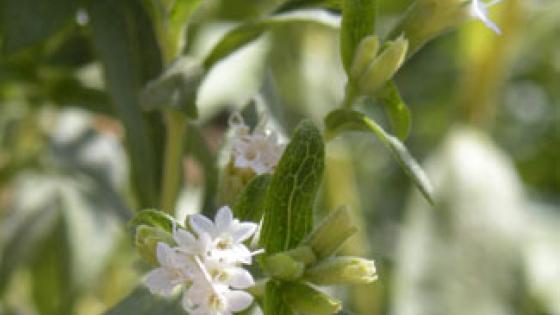
Stevia
Stevia
Stevia (Stevia rebaudiana) is a small, herbaceous plant in the sunflower family. It is a perennial in its native South America, but is grown as an annual in all but the warmest areas of the United States. Stevia is commonly called "sweetleaf" or "sugarleaf" because it contains a glycoside in its leaves that imparts a sugary taste. Ground-up stevia leaves, as well as crude leaf extracts, have been used as a natural sweetener all over the world. Stevia products could only be marketed in the U.S. as dietary supplements until 2008 when a U.S. Food and Drug Administration (FDA) no-objection letter cleared the way for the use of some stevia leaf extracts in food products.
Key Requirements
| Land | Low |
| Labor | High |
| Capital | Medium |
Take the HortBizQuiz to see how much Land, Labor, and Capital you have for your operation.
Markets
- Direct to Consumer
Pests & Disease
Field-grown stevia is not known to have serious insect pest problems and is often reported as exhibiting insect-repellent qualities. The lack of herbicides registered for use with stevia means growers will need to control weeds with alternative methods.
Costs and returns are presented as estimates. They will vary based on your farm and markets.
Challenges
- Extremely difficult for new, untested growers to break into this market.
- As of April 2017, whole-leaf stevia and crude stevia extracts do not have FDA approval for use as a food additive.
- Seeds can germinate poorly, so direct-seeding to fields is not recommended.
Opportunities
- Stevia’s popularity is expected to increase as consumers become more aware of the natural sweetening qualities of the plant.
- With an increase in the number of stevia-based products, the need for more stevia farm production could also increase.